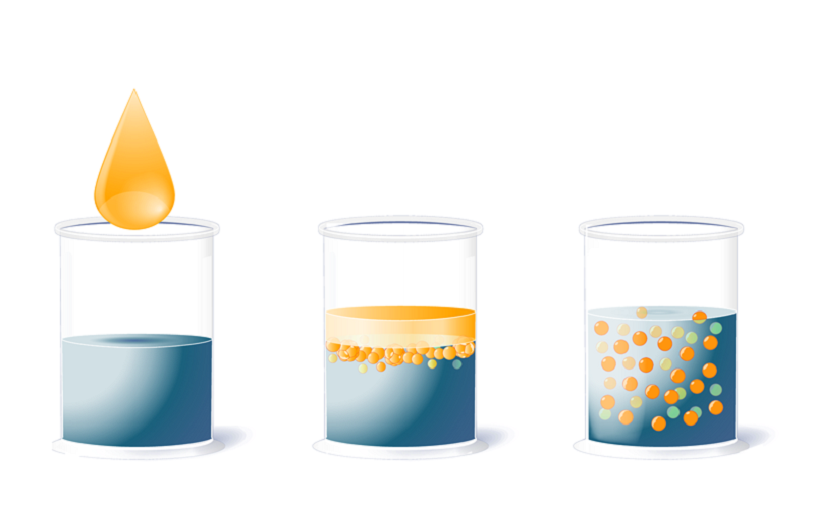Greener buildings with coatings based on alkyd emulsions
Chemistry is found everywhere when looking at materials used in the construction or the finishing touches of a building. This means that innovation starting with the smallest molecular building blocks can make a significant impact on a building’s sustainability profile. According to the World Green Building Council, a ‘green’ building is a building that, in its design, construction or operation, reduces or eliminates negative impacts, and can create positive impacts, on our climate and natural environment.
Green buildings preserve precious natural resources, for example by considering the energy and raw materials used. They should also improve our quality of life. Think of health and safety aspects, such as improved indoor air quality and the use of non-toxic materials. These are just two examples of features that can contribute to making a building ‘greener’. This article explores the technology and benefits of sustainable and non-toxic paints, or more specifically, alkyd emulsions
The logical choice for people and planet
Historically, alkyd-based paint is associated with robust paint based on a solvent with high level of VOC (Volatile Organic Compounds). VOCs are organic chemicals that vaporize in the surrounding air and can be harmful to humans and the environment. Alkyd emulsion-based paint however, is a novel technology based on water instead of solvents. Swapping out solvents for water comes with many benefits such as lower VOC and reduced dependency on fossil raw materials. In other words, it significantly improves the sustainability, health and safety credentials of the paint.
Can’t mix? Emulsify!
Although the benefits are evident, the process of switching from solvents to water is a complex process. The challenge is to create a solution in which the oil-like alkyd can be dispersed into a media (water) which it doesn’t prefer. Alkyds are oil-like and therefore reject water. The solution to this problem is to emulsify the alkyds, which means to create small alkyd droplets in the size of approximately 250 nanometer and cover them with a molecule that allows the alkyd droplets to disperse themselves in water. The molecule used to emulsify alkyds is called a surfactant. ‘Surfactant’ is an abbreviation of surface-active agent, which means that the molecule contains one part that likes water (and rejects oil) and one part that rejects water (and prefers to be surrounded by oil-like media). Using such a surfactant in an alkyd emulsion results in the alkyd droplets being protected from the water while simultaneously allowing the droplets to freely disperse into water. This method successfully generates and stabilizes the dispersion needed to create a water-based alkyd.
Overcoming adoption challenges
There are however still challenges to working with such surfactants in final coatings. If the concentration of the emulsifier is too high, the surfactants tend to have plasticizing effects, which results in undesirable softer films upon drying. Therefore, the emulsifiers should be kept at the lowest possible concentration. Another challenge when using an alkyd emulsion can be the differences in the viscosity profile when transforming the solvent in the alkyd from solvent to water. The viscosity at high-shear might decrease, which results in a lower drag resistance in the paint. As a consequence less paint will be applied to the surface with every brush stroke, which can be inconvenient for the painter.
Despite these challenges, alkyd emulsions today are the preferred binder in numerous sustainable coating applications such as wood coatings for both exterior and interior use. Over the past 20 years the alkyd emulsion has grown from a niche to a standard resin/binder within the coating business and legislation on VOC-levels and the use of non-fossil materials keeps pushing this development forward. There are other water-based binders that can be used in a solvent free coating, but those are generally based on fossil material. A reason for the rise of alkyd emulsions is its inherent composition. An alkyd is composed of three building blocks: a diacid, a fatty acid and a polyol. Each of these components can be obtained from nature, making an alkyd the only binder that can be 100% free from fossil raw material.
Resin revolution
Using alkyd emulsions in a coating does not only result in VOC-free paint, but it allows the coating to be based on resin where the majority of the chemical substituents come from natural and renewable resources. This includes renewable polyols, based on a traceable mass balance concept, such as Voxtar™ and Evyron™, Perstorp’s renewable versions of Pentaerythritol and TMP (trimethylolpropane). Just like the rest of Perstorp’s Pro-Environment portfolio, these products are designed to reduce the carbon footprint and support sustainable sourcing of renewable raw material and come with an ISCC PLUS certification.
The use of coatings based on alkyd emulsions can significantly improve the sustainability, health and safety profile of a building. Adapting and specialising the chemistry to meet the changing needs of the world around us is what drives innovation efforts at Perstorp. But we know that no business can have a big enough effect acting alone. It requires system-wide change. Where Perstorp sit, at the beginning of so many supply chains, this position us to help. We collaborate with suppliers, to stop fossil carbon entering the system, with customers to adapt technologies to improve sustainability, to downstream players to better understand requirements and unmet needs and we pay close attention to trends impacting end users making us ready to take on future challenges.
Collaborating across and throughout the value chain is a mind-set that will sustain Perstorp resins and coatings into the future. Enabling transformation at the heart of our industry, with unsustainable chemistry increasingly on the side-lines.
References available upon request.
Learn more about World Green Building Week here >>
